Introduction
The Prime Minister seems to be developing a disturbing trend of expressing himself on subjects in vague terms, suggesting that “there is a problem” or that “something must be done”. The subtext of these remarks is that the law may be found wanting or that it is unclear or that it does not apply to a particular set of circumstances. As far as that last issue is concerned, isolated incidents should not form the basis for sweeping changes in policy or for wholesale changes to the law.
The Prime Minister has expressed his concerns following the moves by the B416 Lobby Group to effect changes in the law that would restrict access by under 16’s to social media platforms.
His most recent expression has been in the context of the activities of former Press Secretary Michael Forbes.
It is not absolutely clear what Mr Forbes has done but there have been sufficient disclosures to identify a number of issues. I have done this by posing questions and proposing answers.
I should hasten to make two things clear. This is not an opinion, definitive or otherwise, on the circumstances of Mr. Forbes’ activities. Secondly, it is an overview of some of the issues arising and should not be taken as a complete analysis of the issues not of the legal consequences arising.
With those disclaimers, here are the questions posed.
1. Is it a crime to record an interaction with another person using an audio recording device?
2. What are the implications of recording an interaction with another person using an audio recording device.
3. Is it a crime to take a photograph of another person in a public place
a. Incidentally to a photo of a scene that includes a person
b. Intentionally taking a photo of another person
4. What are the implications of taking a photograph of another person in a public place in the above circumstances
5. Is it a crime to take a photograph of another person on their private property from the street
a. If that person is outside and visible from the street
b. If that person is outside and not visible from the street
c. If that person is inside a house but visible from the street through a window
6. When is it a crime to make a photograph or video recording
What is a Crime?
Before we get started there is a matter that requires clarification. When I speak of a crime I am referring to an act or omission that is prohibited by law and punishable upon conviction by a court. This includes offences defined in the Crimes Act 1961 (examples may be serious offences such as murder, theft, assault, fraud), or in other statutes such as, among others, the Misuse of Drugs Act 1975, the Summary Offences Act 1981 or Harmful Digital Communications Act 2015.
There are no common law crimes in New Zealand. A crime must a matter for statute.
A purist would suggest that a crime is defined in the Crimes Act and the other breaches of other statutes that result in a conviction and a penalty are offences. However, from a general point of view a crime is an act or ommission that is prohibited by statute, has criminal liability attached (generally by the entry of a conviction) and is punishable by the State often through imprisonment, fines or other legal sanctions.
Having clarified that matter, let us now proceed to the questions.
Is it a crime to record an interaction with another person using an audio recording device?
The short answer to this question is “no”.
However, the issue is a little more nuanced than that.
There are provisions in the Crimes Act that relate to the interception of a private communication.
It is a crime to intentionally intercept any private communication by means of an interception device. (Crimes Act. S.216B(1)
Intercept in relation to a private communication, includes hear, listen to, record, monitor, acquire, or receive the communication either while it is taking place or while it is in transit.
An interception device is
any electronic, mechanical, electromagnetic, optical, or electro-optical instrument, apparatus, equipment, or other device that is used or is capable of being used to intercept a private communication.
Excluded from that definition are hearing aids or a device that is exempted from the provisions of the Crimes Act.
A private communication is a communication (whether in oral or written form or otherwise) made under circumstances that may reasonably be taken to indicate that any party to the communication desires it to be confined to the parties to the communication.
But not included in that definition is such a communication occurring in circumstances in which any party ought reasonably to expect that the communication may be intercepted by some other person not having the express or implied consent of any party to do so.
A party to a private communication may be any originator of the communication and any person intended by the originator to receive it; and in addition a person who, with the express or implied consent of any originator of the communication or any person intended by the originator to receive it, intercepts the communication.
However there is an exception to the very wide prohibition in s. 216B(1) contained in s. 216B(2). The prohibition does not apply where the person intercepting the private communication is a party to that communication or does so pursuant to certain powers contained in the Search and Surveillance Act 2012, Part 4 of the Intelligence and Security Act 2017 or the International Terrorism (Emergency Powers) Act 1987.
Therefore, if I record a conversation with another person using the record facility on my iPhone I am “intercepting” that communication. But because I am a party to the conversation I am not committing an offence against s. 216B.
It may well be that the other party to the conversation may desire it to be confined to the parties to the communication but that is not covered in s. 216B.
But that is not an end to the matter.
Where a private communication has been intercepted in contravention of section 216B, every one is liable to imprisonment for a term not exceeding 2 years who intentionally—
(a) discloses the private communication, or the substance, meaning, or purport of the communication, or any part of it; or
(b) discloses the existence of the private communication,—
if he or she knows that it has come to his or her knowledge as a direct or indirect result of a contravention of section 216B.
But there is a problem here. The conversation intercepted or recorded must be in breach of s. 216B. It is not in breach of that section if it falls within the exception contained in s. 216B(2).
Finally for this discussion the Interception sections relate to private communications which must be in oral or written form or otherwise. Thus there must be some form of “meaningful content” that passes between the parties for it to be a private communication. Under the present law it does not appear to include the audio recording of an activity other than the exchange of meaningful content or information between the parties.
What are the implications of recording an interaction with another person using an audio recording device.
The previous question addressed the issue of whether recording an interaction was a crime.
That is not an end to the involvement of the law in this area. While not illegal, covert recording might raise concerns under the Privacy Act, particularly regarding fairness and whether there's a compelling reason for collecting the information.
The Privacy Act 2020 governs how agencies collect, use, disclose, store, and give access to personal information. A breach generally occurs when an agency fails to comply with one or more of the 13 Information Privacy Principles (IPPs).
An agency includes an individual.
Remedies for a breach of the Privacy Act 2020 are primarily civil and administrative, and are structured through the Office of the Privacy Commissioner and, if necessary, the Human Rights Review Tribunal (HRRT).
The crux of any issue about a breach of privacy are the Information Privacy Principles.
A person can make a complaint to the Office of the Privacy Commissioner (OPC) if they believe their privacy rights have been breached.
The Commissioner will investigate the complaint and may facilitate mediation or conciliation between the complainant and the agency.
The Commissioner does not award compensation, but can issue a formal opinion and/or recommend remedies.
If the matter is not resolved through the OPC, or the complainant is not satisfied with the outcome, they may take the case to the HRRT.
The HRRT can award damages (including for humiliation, loss of dignity, or injury to feelings under section 88(1)(c)).
It may make declarations that the Act has been breached and issue orders to restrain the agency from continuing or repeating the breach. It may also order corrective action (e.g., to delete or amend personal information) and finally, it may award costs.
There are other potential remedies for a breach of privacy including a complaint to the Ombudsman if the breach relates to access to official information by Government agencies, judicial review if the breach involves a public authority and there is a question of legal error or, although separate from the Privacy Act an action for the tort of invasion of privacy where there has been a serious case of public disclosure of private facts or intrusion upon seclusion.
However, there is no criminal liability under the Privacy Act unless specific offences – such as misleading an agency to access someone else’s personal information- have been committed.
The Courts have held that covert audio recordings may not breach Information Privacy Principle 3 or 4 but whether or not they breach Principles 1 or 2 has been relatively untested.
The issue of recording an interaction with another person using an audio recording device was considered by the Court of Appeal in 2000. In the case of Harder v Proceedings Commissioner [2000] 3 NZLR 80 Court found that covertly recording a telephone conversation does not automatically breach Information Privacy Principle 3.
This principle is concerned with the collection of information from a subject, but not the manner in which it is collected. The Court stated that knowing that information is being collected is enough to avoid a breach of the Principle. The person does not, necessarily, have to know about the manner in which the information is being collected.
In the Harder case, answering questions was held to be enough for a person to know that information was being collected.
Principle 4 deals with the manner in which personal information is collected. It states that personal information shall not be collected by unlawful means OR by means that intrude to an unreasonable extent upon the personal affairs of the individual concerned. Basically, Principle 4 aims to prevent people being induced into supplying personal information by unfair means.
The different circumstances of each case, mean that the determination of whether the covert audio recording was made “unfairly” is made on a case-by-case basis.
In the Harder case, the covert recording of a conversation between a defence lawyer and a witness for the prosecution was deemed to not be made unfairly.
Furthermore the recording of the call was not unlawful if it was done by a participant in the conversation without the knowledge of the other party. The Court of Appeal noted the authority for that proposition was the case of R v A [1994] 1 NZLR 429.
Nor is there necessarily anything unfair about doing so according to Talbot v Air New Zealand [1995] 2 ERNZ 356., but it all depends (as is the case with so many things in the law) on the circumstances. For example recording a conversation without the other party's knowledge may not necessarily be unfair, but it could be considered unfair if it exploits a power imbalance or induces the other party to provide information they would not otherwise share.
The Court held that Harder's action in tape recording the two conversations did not breach either of information privacy principles 3 or 4. Hence his conduct did not amount to an interference with the privacy of Ms C under s 66.(which was the section initiating the complaint) There was therefore no basis for awarding damages against him.
On the other hand, the Privacy Commissioner in Case Note 16479 2001 NZPrivCmr 6 found that an employer who covertly recorded an investigation meeting with an employee did breach Principle 4.
The Privacy Commissioner stated that recording a meeting will not always be held to be unfair; there must be something about the circumstances which makes collecting the information in this way unfair.
In this particular case the Privacy Commissioner believed that by the employee not being aware that the conversation was recorded, the manager misled the employee about the way in which the notes will be recorded. The employee’s responses may have been different, or he may have taken more time to answer, if he had been aware that the conversation was being recorded.
The unfairness lay not in the fact of the recording, but because the employee was not told it was being recorded.
Is it a crime to take a photograph of another person in a public place
a. Incidentally to a photo of a scene that includes a person
b. Intentionally taking a photo of another person
The answer to the general question is no, it is not a crime to take a photo of another person in a public place.
The answer is an even more emphatic “no” if the inclusion of a person in the photo of a scene is incidental to the photo that is being taken.
To suggest otherwise would mean that photography in public places would be prohibited.
Does the situation change if it is the photographer’s intention to take a photo of a particular person in a public place.
There is no crime in the Crimes Act that would deal with this scenario.
What are the implications of taking a photograph of another person in a public place in the above circumstances
Guidance in answering this question comes from the case of Hosking v Runting [2004] 1 NZLR 1. In that case Mr Runting, a photographer with a magazine was commissioned to get some up-to-date photos of the children of broadcaster Mike Hosking and his then wife. He took photographs of them being pushed in a pushchair in the street by their mother.
Upon learning of the photographs, the Hoskings advised magazine that they did not consent to the taking of the photographs, nor to their publication, and that they objected to both. They sought an injunction.
The major issue in the case was whether or not there was a tort of breach of privacy that would allow the Hoskings a remedy. In addition there were a number of other issues raised which were rejected. One argument was that there was the unauthorized use of their children's images which constituted a misappropriation of their likeness. This was rejected on the basis that there was no cause of action in New Zealand law for misappropriation of one’s image.
It was also claimed that the act of photographing the children amounted to trespass or assault but the Court found that the facts did not support a finding of trespass or assault in the taking of the photographs.
Finally it was alleged that the publication of the photographs would cause emotional harm to their children. No evidence was presented to substantiate a claim of negligent infliction of emotional harm to the children.
But the Court did hold that there was a tort of invasion of privacy. The Court outlined two fundamental elements for a successful claim of invasion of privacy in New Zealand:
First there must be a reasonable expectation of privacy: The plaintiff must demonstrate the existence of facts in respect of which there is a reasonable expectation of privacy. This involves assessing whether the information is private and whether the plaintiff could reasonably expect it to remain so.
Secondly publicity given to those private facts must be considered highly offensive to an objective reasonable person. The focus is on whether the publication would cause real harm, humiliation, or distress to the individual concerned.
Additionally, the Court recognized a defense of legitimate public concern, which allows publication to be justified if the information is of legitimate public interest. This ensures that the tort is tightly confined and does not unduly limit freedom of expression.
Was there a reasonable expectation of privacy in a public place like a street?
The Court held that there is generally no reasonable expectation of privacy in a public place like a street. The photographs in question were taken in a public street, and the Court concluded that the appellants could not reasonably expect privacy in such circumstances.
The Court emphasized that the photographs did not disclose any private facts beyond what could be observed by any member of the public in the same location.
Public places, such as streets, are not typically considered private domains, and individuals in such spaces cannot expect to be shielded from observation or photography.
However, the Court acknowledged that in exceptional circumstances, a reasonable expectation of privacy might arise even in a public place, such as when the nature of the activity or the manner in which the information is obtained is particularly intrusive or sensitive.
The case also outlined a test for a reasonable expectation of privacy involving the following key considerations:
1. Nature of the Information or Activity: Certain types of information, such as health, personal relationships, or finances, are more likely to be considered private. Activities that a reasonable person would understand to be meant to be unobserved may also qualify.
2. Context and Circumstances: The circumstances in which the information was obtained or the activity occurred are critical. For example, activities in a public place generally do not attract a reasonable expectation of privacy unless there are exceptional circumstances.
3. Contemporary Standards: The assessment is made by applying contemporary standards of morals and behavior, considering what a reasonable person would view as private.
The Court emphasized that there is no "bright line" between what is private and public, and the determination depends on the specific facts of each case.
The final issue is that of whether or not the Privacy Act is engaged in the case of photos in a public place.
The Court held, no, the Privacy Act 1993 is not engaged in considering the issue of photographs taken in a public place, as determined in Hosking v Runting.
The Court noted that the Privacy Act does not apply to the news media in relation to their news activities, which includes the gathering and dissemination of news, observations on news, or current affairs (Privacy Act 1993, s 2(1)(b)(xiii)).
Additionally, the Privacy Act primarily deals with the collection, use, and disclosure of personal information, but it does not provide a legal right enforceable in a court of law for such matters.
Therefore, the Act does not offer remedies for the publication of photographs taken in public places, such as streets, where there is generally no reasonable expectation of privacy.
Is it a crime to take a photograph of another person on their private property from the street
a. If that person is outside and visible from the street
b. If that person is outside and not visible from the street
c. If that person is inside a house but visible from the street through a window
The first observation is that in and of themselves none of the above actions are a crime with the exception possibly of (c) which may be a crime if certain preconditions are fulfilled. Absent such preconditions none of the actions are a crime.
The real question is whether or not there has been a breach of privacy that may give rise to liability under the Privacy Act or the tort of breach of privacy.
The first question is whether or not in any of the above scenarios there is a reasonable expectation of privacy. The answer is – as is so often the case in the law – it depends.
In scenario a. there is unlikely to be a reasonable expectation of privacy if there is no visual obstruction from the street to the house. The answer may be different if there is a hedge or a fence obstructing the view from the street.
For the purposes of scenario b. let us assume that the homeowner is in the back yard. The property has fences and hedges obstructing view from the street. The homeowner is unable to see out onto the street and is obscured from view. In such a situation, I would suggest, there would be a reasonable expectation of privacy on the part of the homeowner. That expectation would be reinforced by the fact that it would not be possible to be photographed from the street. However, the intrepid photographer deploys a drone and takes an aerial shot of the homeowner in the backyard.
Arguably there is a breach of privacy along with a possible trespass that might be actionable for damages along with possible breaches of local authority by-laws and Civil Aviation rules regarding the use of drones. But no crime.
As to scenario (c). The situation here is a little more complex. There could arguably be no reasonable expectation of privacy if one were standing in front of a window which could be viewed from a public place like a street. But at the same time would that absence of a reasonable expectation of privacy extend to an expectation that one in such a situation may be photographed. I would assume not.
And what would happen if the person in the window viewed from the street were to be getting dressed or engaged in some similar activity. That would need to be considered through the lens of whether the photograph amounted to an intimate video recording.
Which leads us to the final question.
When is it a crime to make a photograph or video recording.
The Crimes Act and the Harmful Digital Communications Act (HDCA) contain specific provisions relating to the taking, possession and distribution of intimate video recordings.
In the Crimes Act an intimate video recording is one that is non-consensual. It is a crime to make such a recording. The HDCA, on the other hand, recognizes that there may be a consensual element involved in the making of the recording and that Act deals with the distribution of such an image. In many cases this may be described as “revenge porn”
The Crimes Act
The relevant provisions of the Crimes Act state as follows:
An intimate visual recording means
“a visual recording (for example, a photograph, videotape, or digital image) that is made in any medium using any device without the knowledge or consent of the person who is the subject of the recording, and the recording is of—
(a) a person who is in a place which, in the circumstances, would reasonably be expected to provide privacy, and that person is—
(i) naked or has his or her genitals, pubic area, buttocks, or female breasts exposed, partially exposed, or clad solely in undergarments; or
(ii) engaged in an intimate sexual activity; or
(iii) engaged in showering, toileting, or other personal bodily activity that involves dressing or undressing; or
(b) a person’s naked or undergarment-clad genitals, pubic area, buttocks, or female breasts which is made—
(i) from beneath or under a person’s clothing; or
(ii) through a person’s outer clothing in circumstances where it is unreasonable to do so.”
A visual recording involves a real word subject because the recording of an event or a person in certain circumstances is envisaged. It must be visual but the use of the word “recording” which involves the creation of a record of a real-world event is essential to the definition. That conclusion is reinforced by the exemplars that are provided - a photograph, videotape, or digital image – coupled with the fact that the recording must be made without the knowledge or consent of the individual the subject of the recording. Thus an actual person in actual circumstances rather than an AI created image is envisaged by the definition.
The elements are:
1. There has to be a visual recording
2. There has to be a person the subject of the recording
3. The recording has to be made either without the knowledge or consent of the person the subject of the recording
4. The content of the recording must be one of any of the requirements set out in the section. The requirements of (a) envisage certain intimate acts. The requirements of (b) envisage “up-skirting” or images through clothing of particular parts of the body.
Section 216H creates the offence of making an intimate visual recording. Section 216I creates the offence of possessing an intimate visual recording for certain purposes and those circumstances can be generally described as relating to distribution of the recording. In addition there is created the offence of possessing an intimate visual recording without reasonable excuse. Section 216J prohibits the distribution of the recording.
The Harmful Digital Communications Act
The definition of an intimate visual recording in the HDCA has a subtle difference from that in the Crimes Act.
The wording of the definition is as follows:
An intimate visual recording
(a) means a visual recording (for example, a photograph, videotape, or digital image) that is made in any medium using any device with or without the knowledge or consent of the individual who is the subject of the recording, and that is of—
(i) an individual who is in a place which, in the circumstances, would reasonably be expected to provide privacy, and the individual is—
(A) naked or has his or her genitals, pubic area, buttocks, or female breasts exposed, partially exposed, or clad solely in undergarments; or
(B) engaged in an intimate sexual activity; or
(C) engaged in showering, toileting, or other personal bodily activity that involves dressing or undressing; or
(ii) an individual’s naked or undergarment-clad genitals, pubic area, buttocks, or female breasts which is made—
(A) from beneath or under an individual’s clothing; or
(B) through an individual’s outer clothing in circumstances where it is unreasonable to do so; and
(b) includes an intimate visual recording that is made and transmitted in real time without retention or storage in—
(i) a physical form; or
(ii) an electronic form from which the recording is capable of being reproduced with or without the aid of any device or thing
Thus the image may be consensual or non-consensual. Given this distinction, the possession of such an image would not be an offence against the Crimes Act provisions because the image in the Crimes Act must be made without consent.
Under the HDCA the offence created by section 22A which relates to the electronic distribution of the intimate visual image.
The elements of section 22A specifically exclude the requirement on the part of the person posting the communication to intend to cause harm.
Section 22A HDCA provides that an offence is committed if a person
1. Without reasonable excuse posts a digital communication
2. That is an intimate visual recording of a victim
3. Knowing that the victim has not consented to the posting or
4. Being reckless as to whether the victim consented to the posting.
To summarise:
1. It is a crime to make an intimate visual image of a person without their consent.
2. It is a crime to possess or distribute such an intimate visual image
3. It is not a crime to make an intimate visual image of a person with that person’s consent.
4. It is not a crime to possess an intimate visual image that was made consensually.
5. It is a crime to electronically distribute such an image if the person depicted in the image does not consent or the poster is reckless as to whether the person depicted in the image consented to its posting.
A Need for Change?
Perhaps one of the main issues raised as a result of this discussion is whether there should be a prohibition on the making of a non-consensual intimate audio recordings.
The Prime Minister’s rather vague meanderings on this subject included the following comment reported in the Post:
“I'm open to looking at our settings. We have a series of... laws, whether it's the Harmful Digital [Communications Act], whether it's privacy laws, whether it's new stalking laws, but obviously... we're open to looking at that further.”
The same article reported that
“Justice Minister Paul Goldsmith told RNZ criminalising the making of intimate audio recordings without consent would be a significant change.
We can ask some questions about that but I wouldn't underestimate that that's a big change.”
The problem is that perfectly lawful acts, such as taking photos of people in public places where there is no expectation of privacy is viewed as an invasion. Dr. Cassandra Mudgway of the Canterbury University Law School states:
“What’s so awful and disturbing about this is that it’s so unknowable - that you can just be out in public, doing your everyday thing, going to the gym, and not realise that somebody is... invading a part of you.
... how awful that is to then turn all the public spaces that you enjoy into potential places of danger or exploitation that you didn’t expect before.
Victims were being confronted with the fact “that it’s not criminal in any way, that it’s legal, but it’s so intrusive”.
But perhaps that overstates the case. Putting to one side the hyperbolic language “invading”, “danger” and “exploitation” and “intrusive” the fact of the matter is that there is no expectation of privacy in a public place. The rather histrionic concerns of Dr Mudgway could equally apply if someone were looking at another.
But Dr Mudgway considers that taking photographs amounts to “gendered harm” and “technology-facilitated violence”. This description of taking photographs of people in places where there is no expectation of privacy does little to clarify the issue.
Former MP Louisa Wall who was responsible for the enactment of section 22A HDCA states:
“[the] issue here is that the current Harmful Digital Communications Act (HDCA) primarily criminalises the posting of digital communications with intent to cause harm — not the covert collection or possession of such material”.
This however ignores the subtle distinction between a non-consensual visual image (under the definition in the Crimes Act) and a consensual one under the HDCA. She seems to have overlooked the fact that possession of a non-consensual intimate visual image is a crime. But there is no wrong in the possession of a consensual intimate visual image.
Ms Wall suggests that there should be an offence of the non-consensual creation or possession of intimate or intrusive digital content.
Part of that suggestion may be of assistance in the future in any review of the law, and certainly is a little more focused than the meanderings of the Prime Minister.
However Ms. Wall’s suggestions could be edited to a certain degree by making it non-consensual creation or possession of intimate digital content. But the problem lies in the definition of intimate digital content. The definition of intimate visual images is clear. I would hesitate to define intimate audio content? Perhaps it should be limited to the non-consensual recording of sexual intercourse. That may be a bit limiting for some. The question is how far is too far.
Why do I exclude intrusive digital content. That has implications for the expectation of privacy in a public place. Allow me to close with a few images that were taken by my wife and I.
They are digital photos and are therefore digital content. They are photos of people that we saw in our travels. Could they be considered intrusive? Are they examples of “danger” or “exploitation”.
I leave it to you if you have accompanied me thus far.






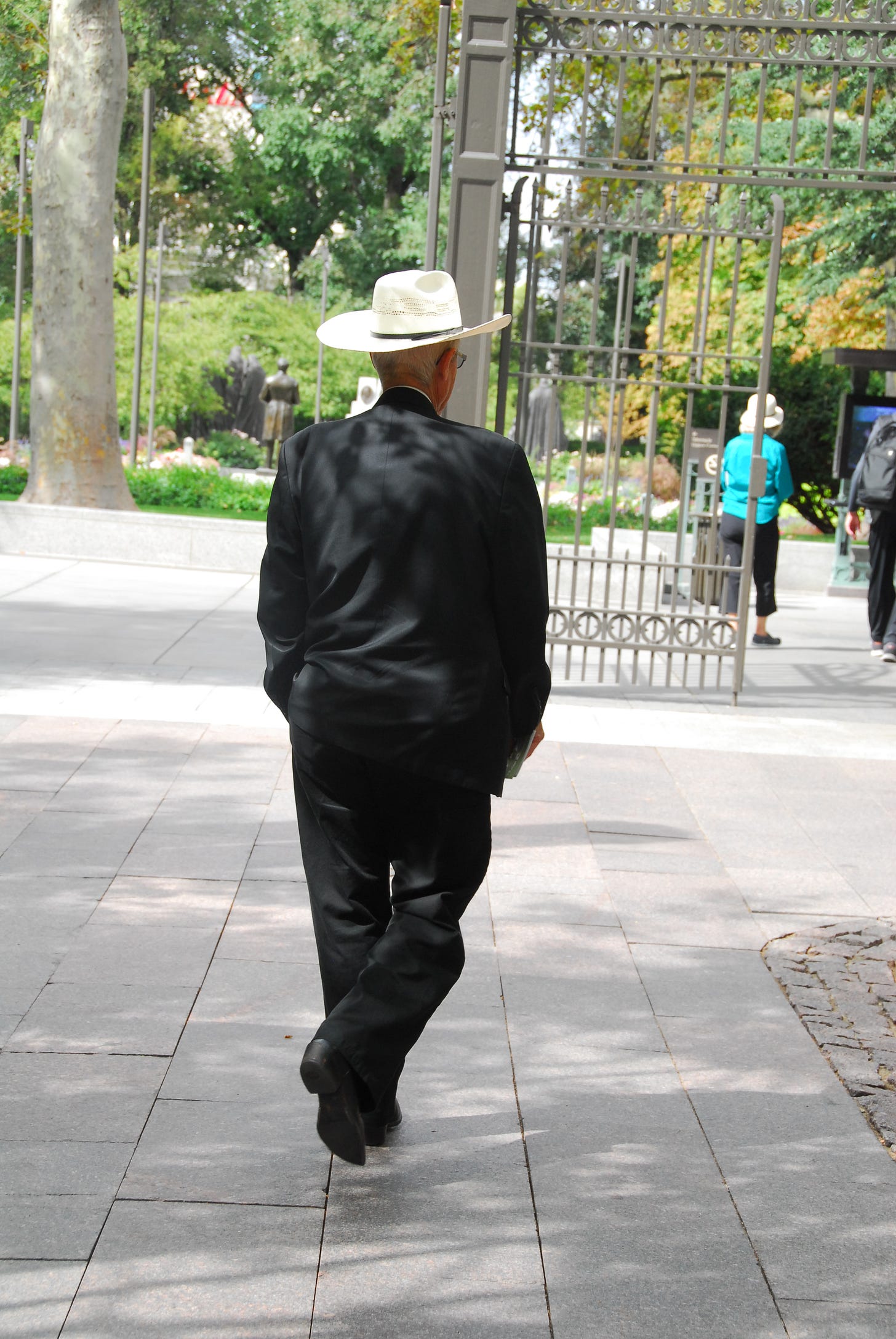

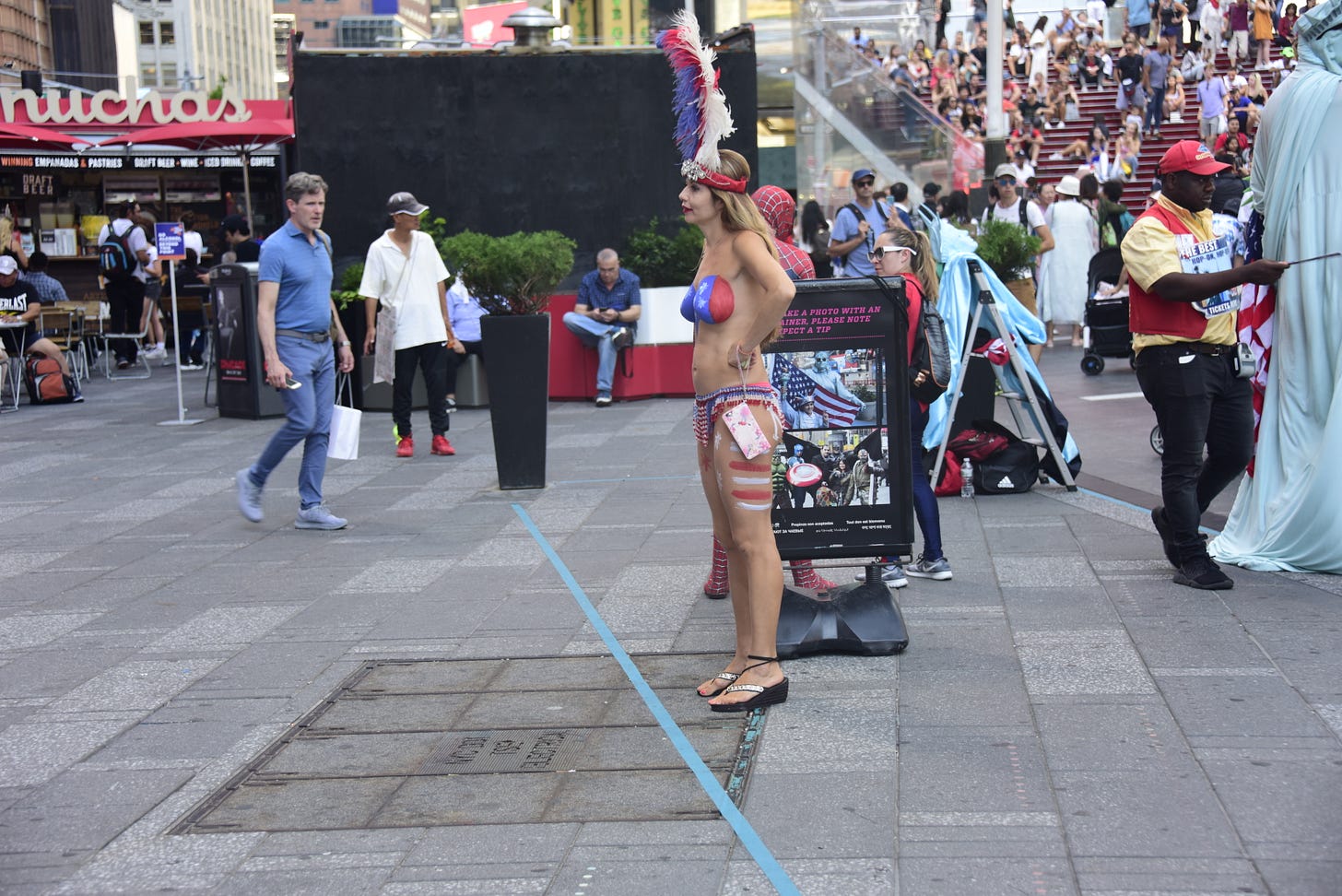


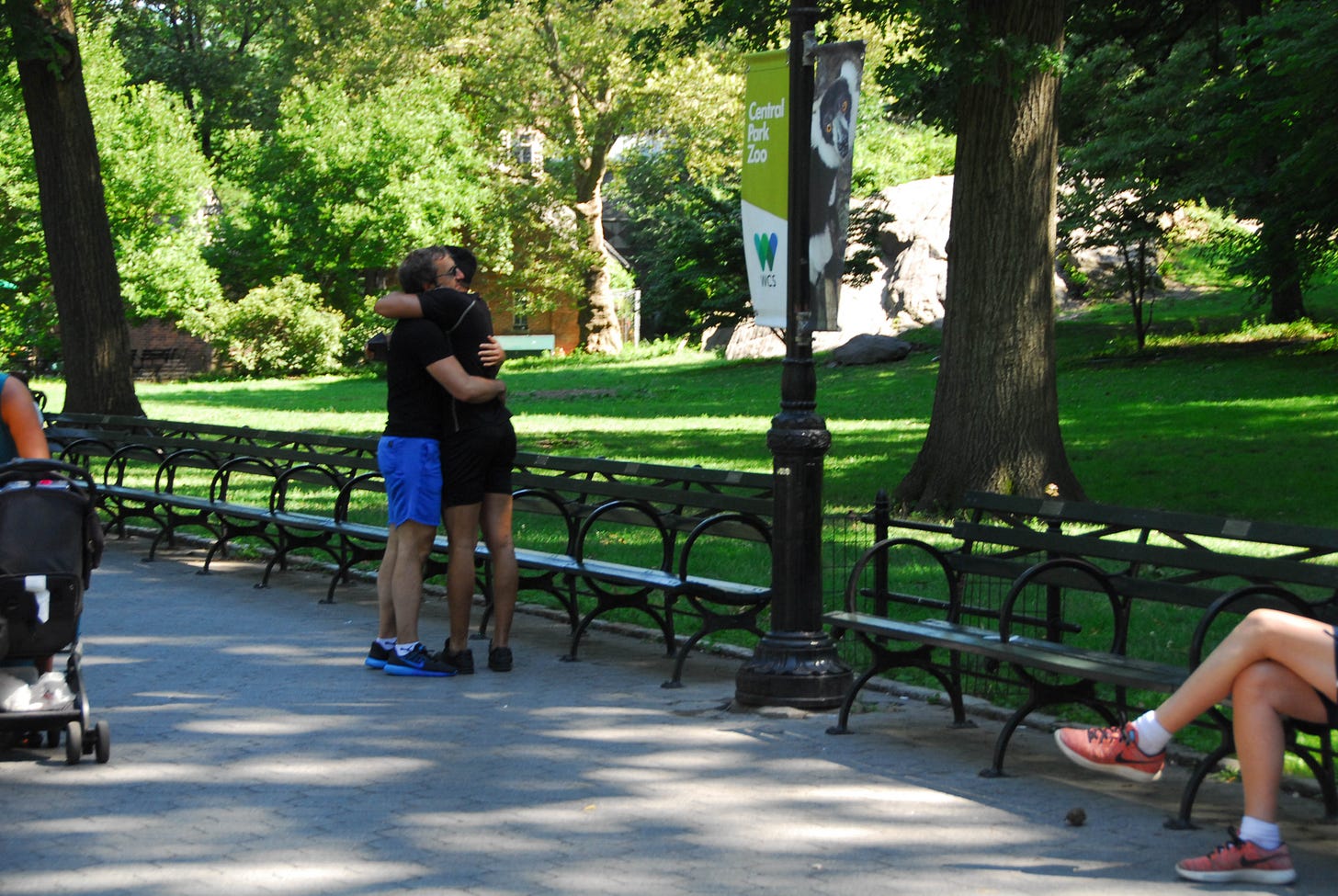
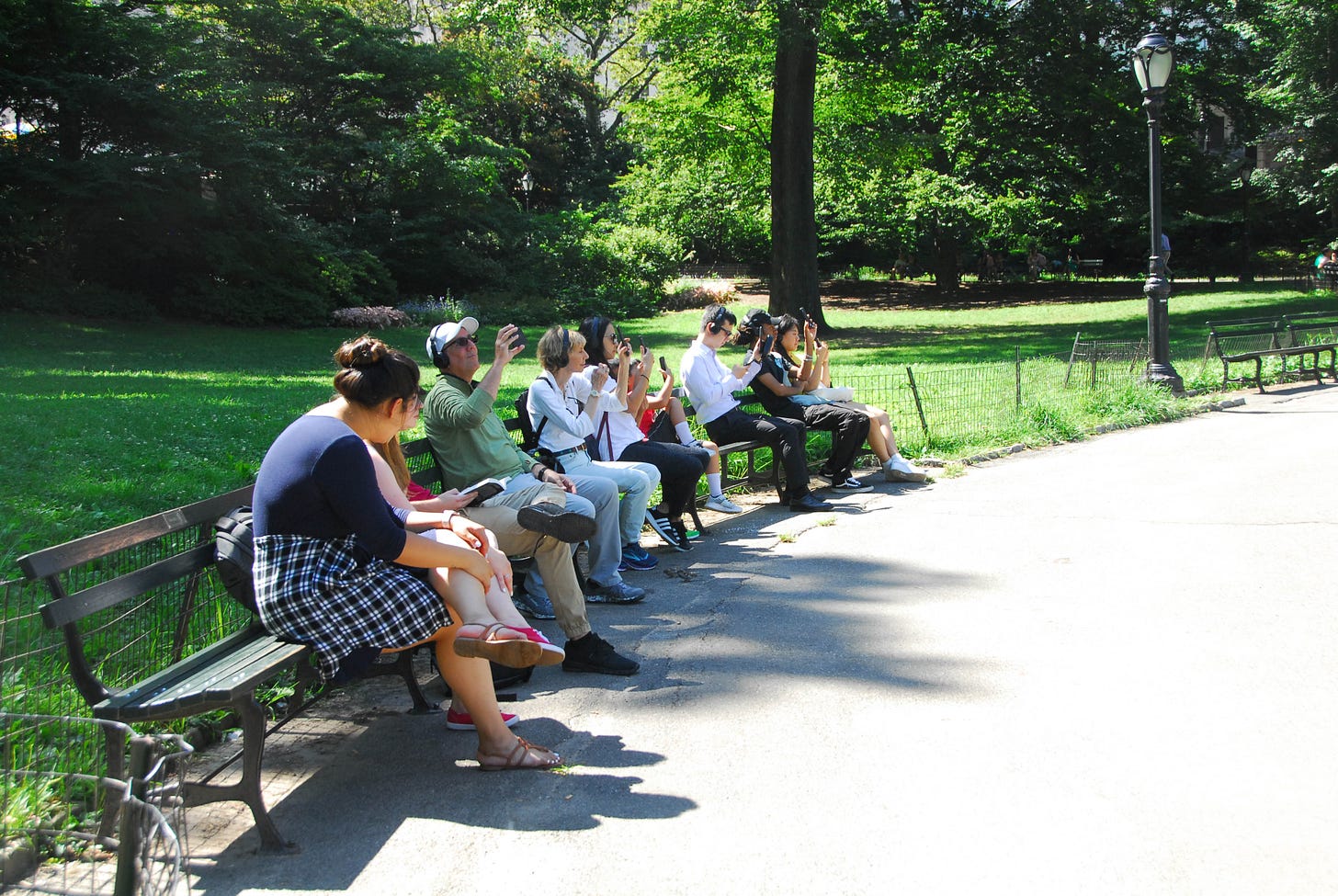
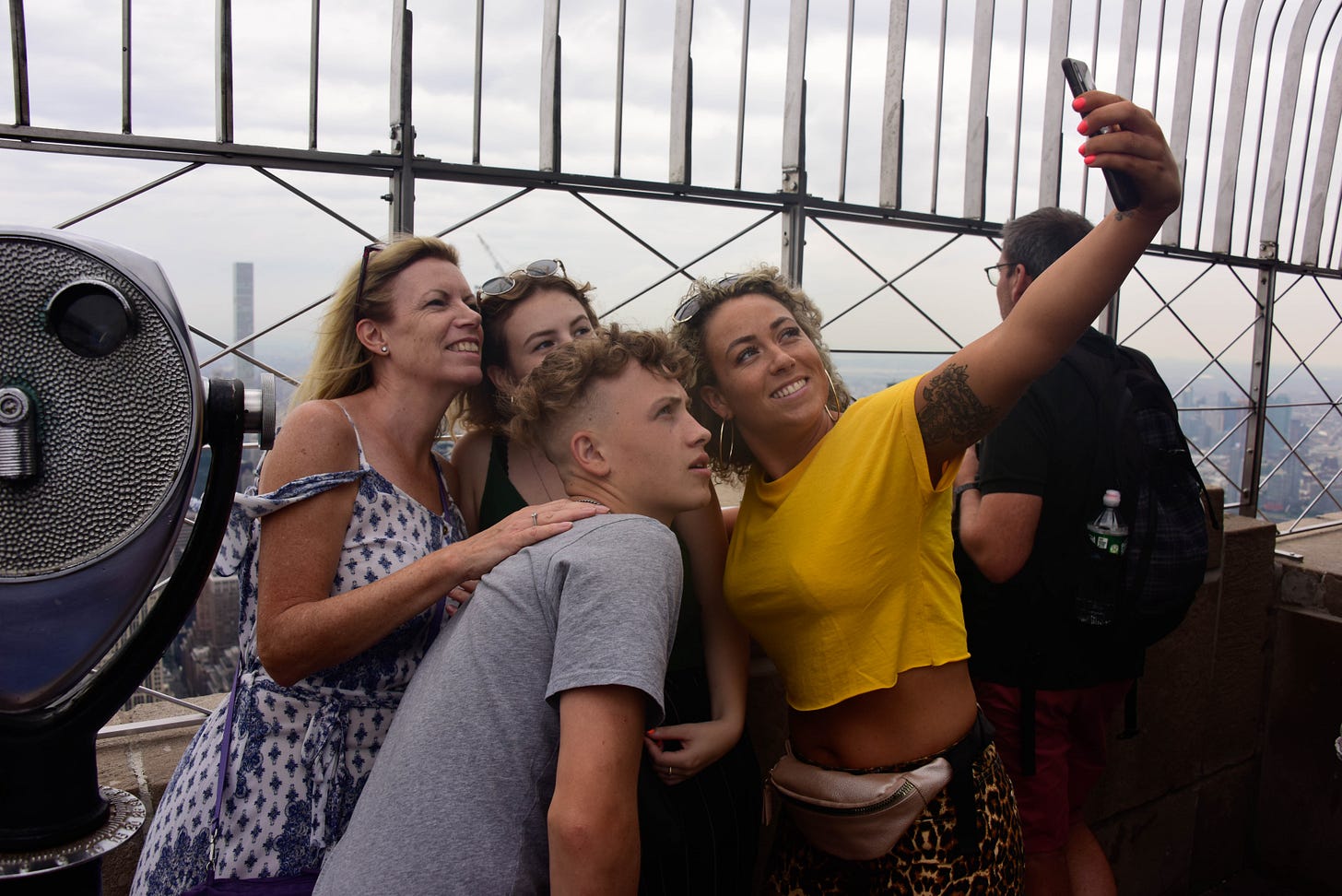
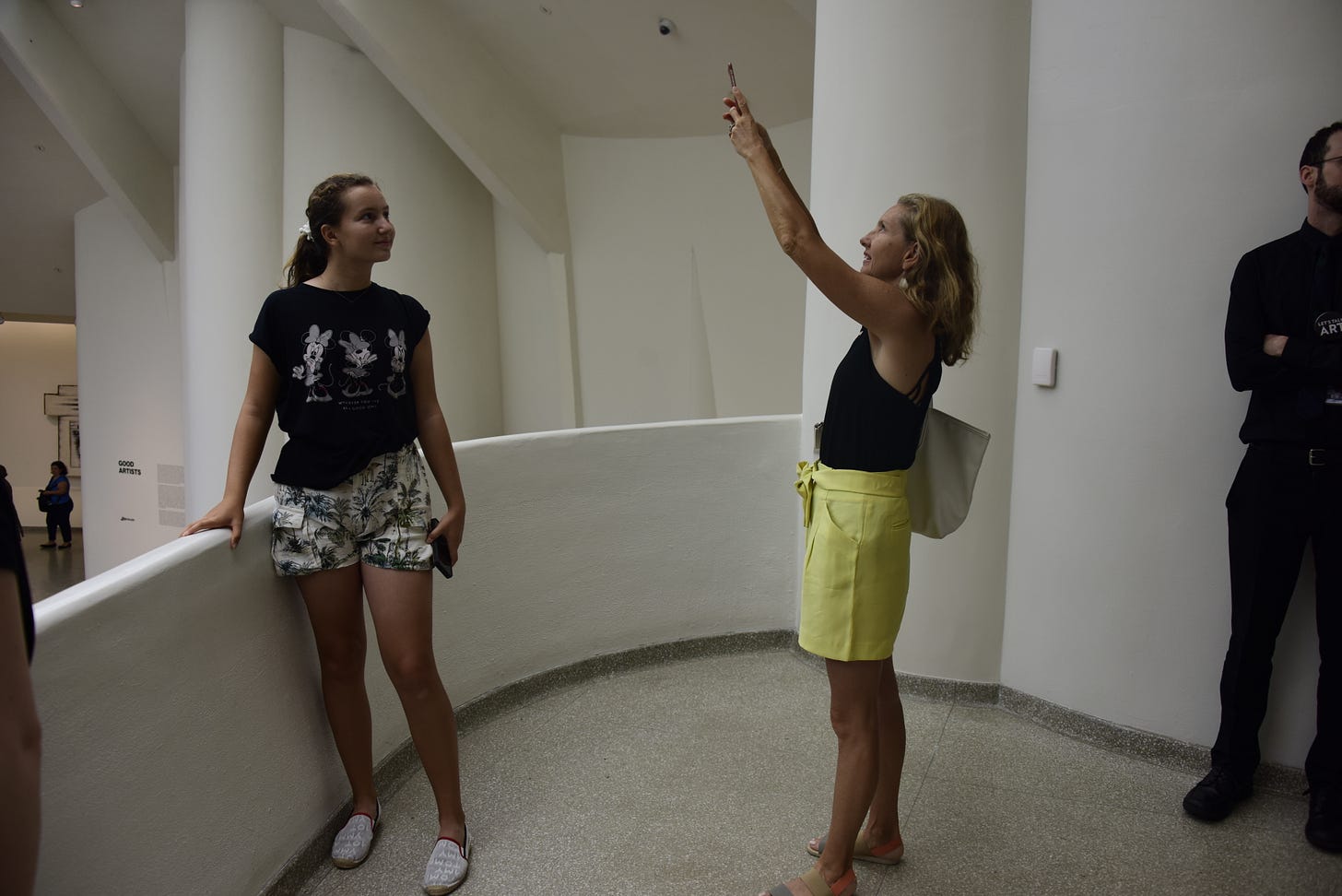
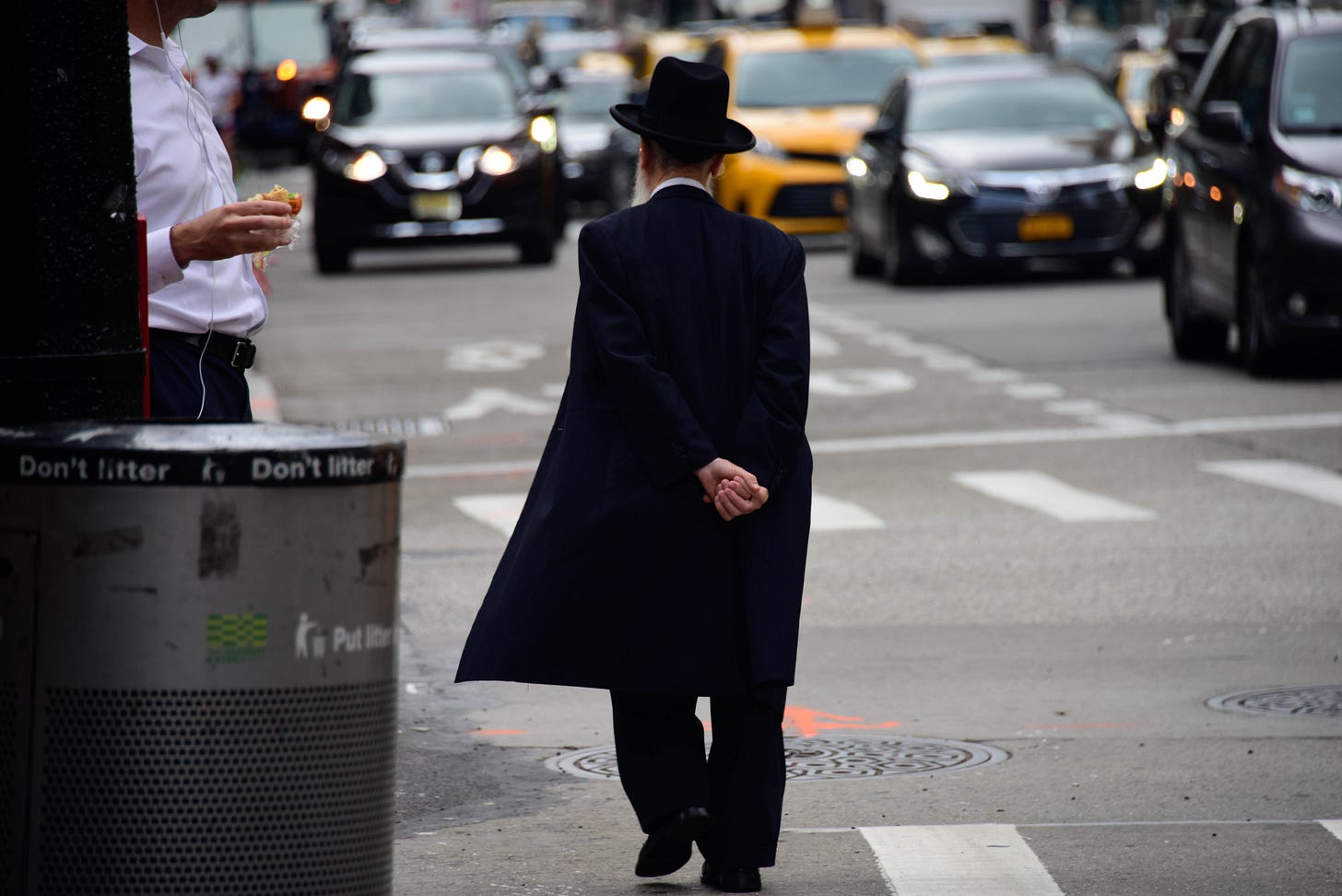
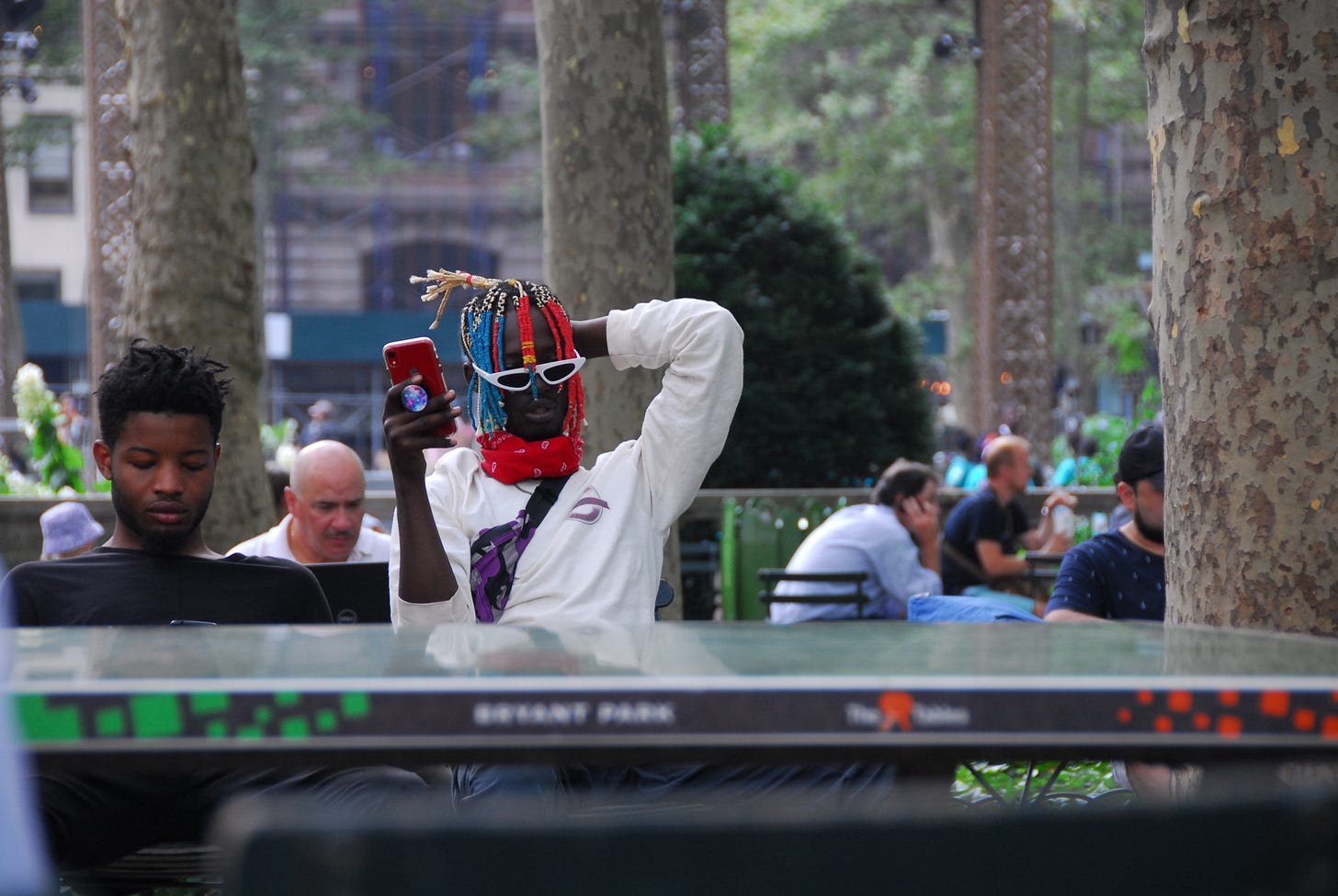
Superb analysis Halfling...where do you find the time!?
I'm reminded of a joke...a man writes to Dr Phil (McGraw), the American TV psychologist:
"Dear Doctor Phil,
I was peering through my telescope at my female neighbour undressing and, as I masturbated, I realised my wife was watching me from our kitchen. My question for you, Dr Phil...is my wife a pervert?"